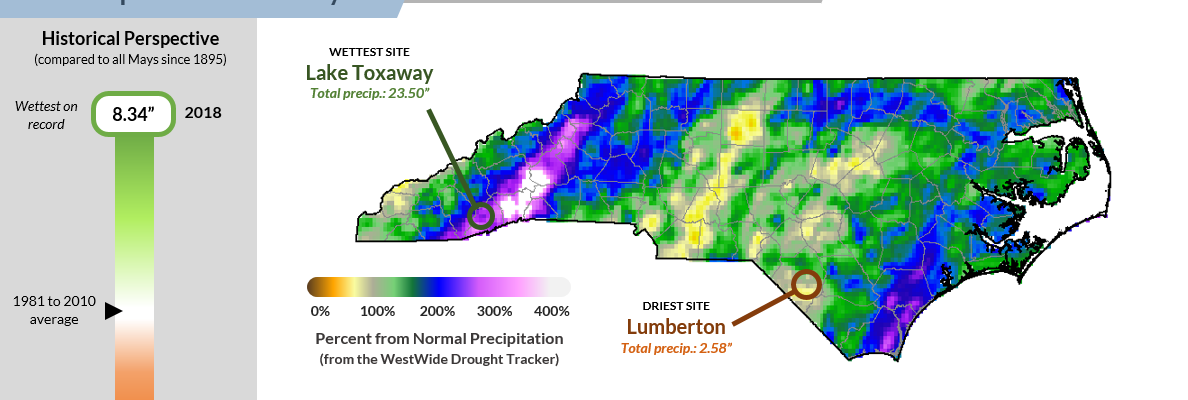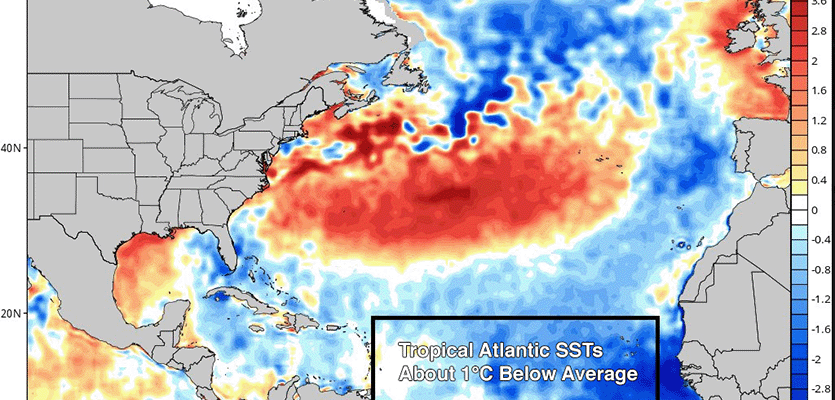-

The latest monthly summary for North Carolina covering May 2018 is now available. Sneak preview: it was their wettest May ever! You can read more at https://climate.ncsu.edu/climateblog?id=259&h=5666e5c1.
Posted in: Climate summaries -

This week’s research question from the Georgia Climate Project Roadmap comes from the section on agriculture. Since agriculture is the biggest industry in Georgia, the impacts of changing climate are going to hit our state’s economy hard but could also provide new opportunities for farmers to produce new crops or change their rotation strategies to…
-

With almost three weeks of rain under our belts, and everything dripping with moisture, the next thing to expect from all the standing water are clouds of mosquitoes. Besides being a nuisance, they can also carry diseases like West Nile Virus or Zika. Because of this, it is important to minimize pools of water where…
Posted in: Climate and Ag in the news -

The rainy, humid and cloudy weather has had some detrimental effects on wine and table grapes in the Southeast. UGA grape specialist Cain Hickey describes some of the issues they are having in a blog post from earlier this week. You can read it at https://site.extension.uga.edu/viticulture/2018/05/what-a-long-strange-bloom-its-been/. His blog is a great source of grape-specific information for…
-

After two weeks of very rainy conditions, most producers in the Southeast will be pleased to note that this week’s rain forecast is for much smaller amounts over the course of the week, including dry days for most of the area on Monday and Tuesday. That will allow some of them to catch up on…
Posted in: Climate outlooks -

If you follow this blog regularly, you know from previous posts that the meteorological seasons start at the beginning of months and not in mid-month as the astronomical calendar does. So June 1 marks the beginning of summer for meteorologists and climatologists. The choice of using the beginning of a calendar month is both practical…
-

The official start of the Atlantic hurricane season is today, June 1. Obviously, we jumped the gun this year with Alberto transitioning from subtropical to tropical storm over land, but it is not that unusual to have a tropical system in the Atlantic before June 1. It is very unusual, though, to have one go…